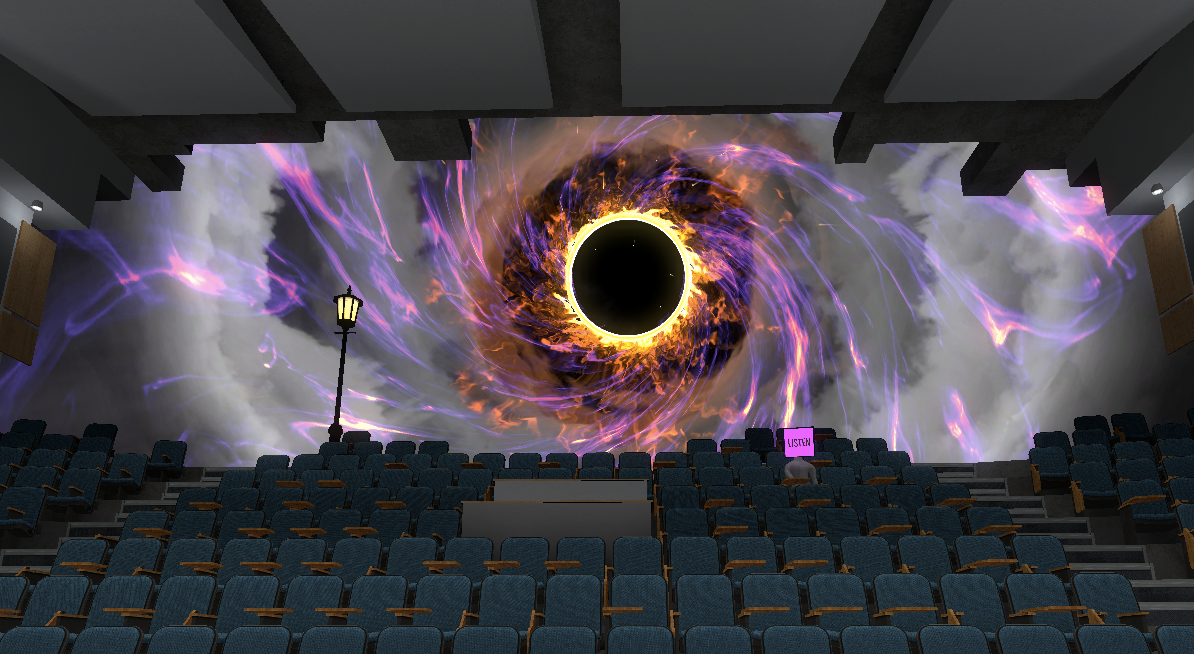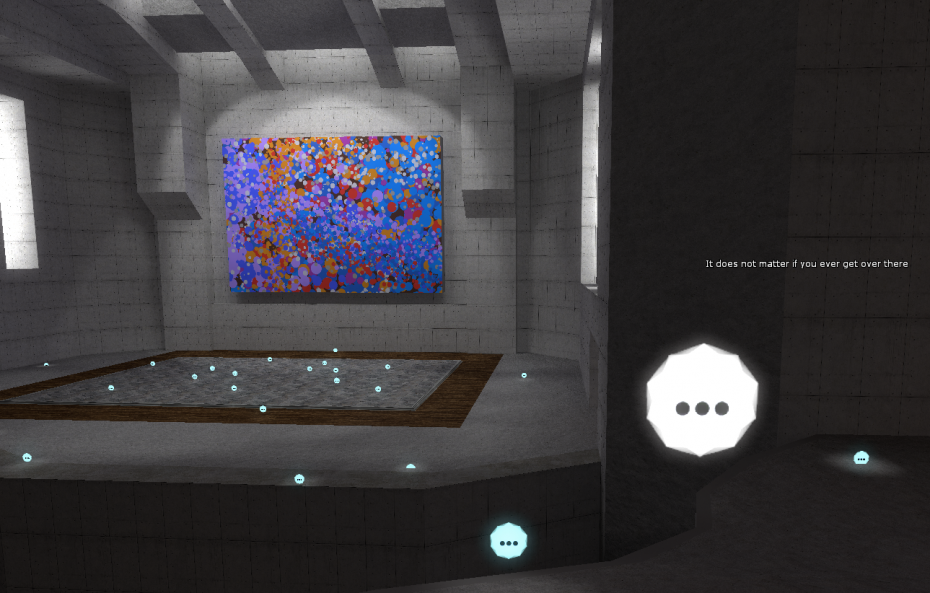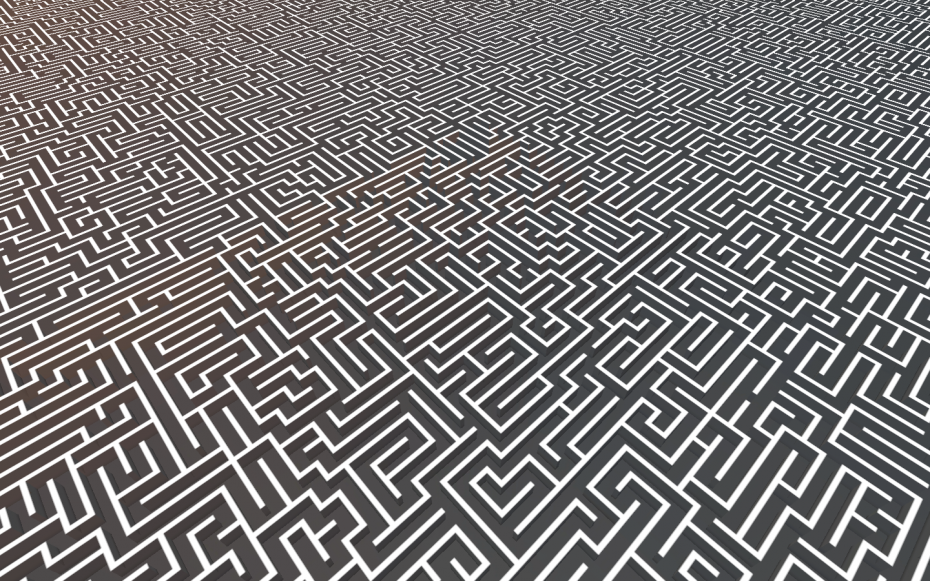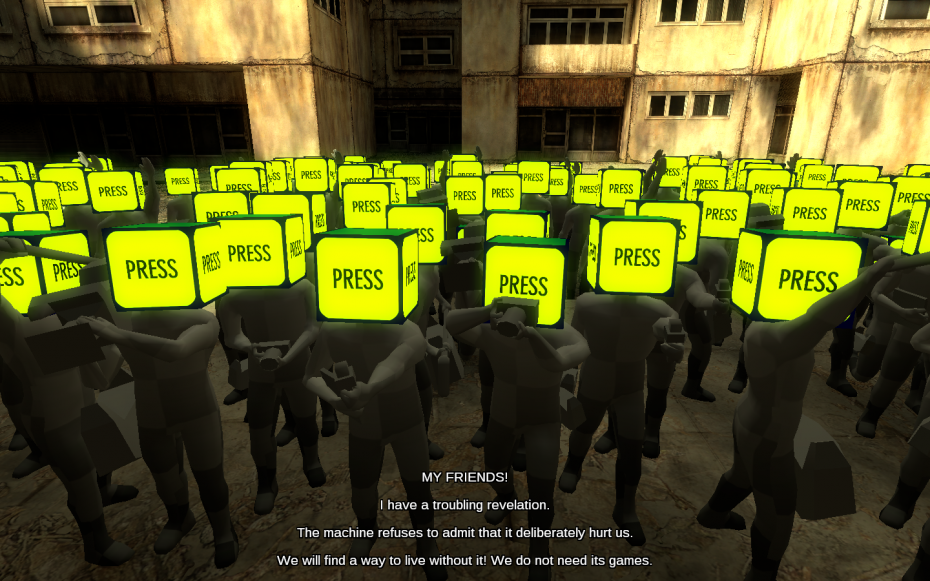The Beginner's Guide is a game that doesn't want to be written about

The first time I finished The Beginner's Guide, the newest game by The Stanley Parable creator Davey Wreden, I felt furious and sick and sad. I shut my laptop and walked around the block at three in the morning, half in tears, trying to figure out what I could possibly say about this game. When I came home, I wrote over 2000 words about why the game never should have been made, and went to bed.
When I woke up, I threw the whole thing out and wrote a totally new review, one that said the game was brilliant, that I loved it, that everyone should play it. That's the review you're reading now. It feels fitting. The Beginner's Guide is a game likes to make you question not just what it means, but whether you've been looking for meaning in games in the wrong way altogether.
On its face, this is an autobiographical story about Wreden's relationship with a game developer identified only as "Coda," and the events that unfolded in their lives between 2008 and 2011. If you've never heard of Coda, don't feel bad: no one has. Wreden describes him as a very private, even reclusive developer he met at a game jam in Sacramento, a prolific creator who never posted his games online and shared them only cautiously-perhaps even exclusively-with Wreden.
Although The Beginner's Guide revolves centrally around their friendship, you'll never see either of the men on screen. Instead, you learn about Coda the same way Wreden did: by playing his games. Each time you're dropped into one of Coda's small, strange world, Wreden takes you on a guided tour, narrating his interpretations of what the games mean and what they can tell us about the inner struggles of this enigmatic figure.
https://youtu.be/RBK5Jheu0ToWreden is openly obsessed with Coda's work, which he explains by saying that they were a huge influence on his games, though that doesn't feel like the whole story. He suggests that there is a grand, unified theory behind all of them, and that only by looking at them as a whole can we really understand this vision-or the man behind it.
This is a story about a game developer told by a game developer through games, so the mechanics of Coda's works matter a great deal. Indeed, at least some of what Wreden does is straight up game criticism, deconstructing the puzzles and labyrinths and long, lonely hallways-why they're designed the way they are, why they feel the way they do.In one game, you ascend a long, white staircase towards a door, but the nearer you get, the more you slow down until you're practically standing still. In another, you find yourself suddenly trapped in a prison cell, and have to wait an entire hour for it to open again. Wreden mercifully intercedes in these moments to modify the game in real-time and make it easier to navigate, observing this is "something we used to argue about a lot: whether a game ought to actually be playable."
There's an unpleasant sense of emotional colonialism that sometimes permeates Wreden's analysis, a sense that Coda's games are neither as accessible or transparent as he would prefer-as though something owed has not quite been delivered. Yes, Coda made these games for himself, and if they seem unwelcoming or unplayable, it's probably because they weren't meant to be played-that they aren't for us. But we're playing them anyway, and when you're contemplating the idea of sitting in a digital cell for an actual hour, it's hard not to feel a little grateful that Wreden is willing to compromise Coda's artistic vision.
It's your choice, of course: if you want to honor the intentions of Coda's games, you can always refuse Wreden's help and attempt things the hard way. Do the games mean more if you do? Does it mean anything at all if you do?

One of the games in Wreden's tour of Coda's oeuvre, titled "This game is connected to the internet," supposedly allows online players to leave tiny messages scattered across the level in little bubbles for other people to find read. But-surprise!-the game isn't connected to the internet at all, and all the messages supposedly left by dozens of people were actually only written by one person: Coda.
To Wreden, these messages represent a false or imagined community, and one that surely conveys a profound sense of loneliness: he sees them as a personal invitation of sorts from Coda, a way to know him better, and maybe a way for both of them to connect and feel less lonely.
His narration cuts back and forth through each game like a knife through a layer cake, revealing what's happening mechanically, what he thinks Coda's trying to express, and what he believes this means about Coda as a person (and of course, about their friendship). While many of his analyses are very incisive, others arc towards the personal in ways that sometimes feel awfully presumptive.
Wreden says several times that he got to know Coda better through his games than he did by actually talking to him, and indeed, that he might even prefer it that way. "This idea is really seductive to me," he says, "that I could just play someone's game and see the voices in their head and get to know them better, and have to do less of the messy in-person socializing."

But exactly how much can you really tell about a person exclusively from the games or art they make? When is a puzzle a window into someone's soul, and when is just a puzzle-or at least a means of expressing something besides personal pathos?
I've met a lot of creators over the years, and sometimes it's true: there are moments when their fears and anxieties and desires end up mapped pretty closely to their fictional characters and fantastical worlds. Sometimes, if you know them well enough, you can see the shapes of their intimate agonies moving beneath the sheets of their creations, the less-than-subtle reasons why that love interest suddenly betrayed the hero, or why this particular city melted down in a fictional nuclear holocaust.
But it rarely works well in reverse. If you don't truly actually know someone, trying to reverse engineer a deep inner knowledge of their psyche simply by consuming their art is more akin to reading tea leaves than reading their diary. But we love to do it anyway, because it's a profoundly seductive idea: that every creative work could be a secret map into the heart and mind of someone you admire, if only you know how to read it right.
Wreden describes growing frustrated, sometimes, when Coda won't tell him exactly what the games "mean." Over and over, he inserts himself into the space between Coda and his games as an interpretive conduit, believing that if only he can discern the hidden meaning behind these abstruse worlds, then perhaps he will finally understand his friend. As though a person were a puzzle; as though a person could be solved.
It's difficult to tell at first exactly what The Beginner's Guide is supposed to be: a tribute, a eulogy, a motivational speech. Wreden says several times that Coda stopped making games in 2011 and that he hopes one day his old friend will create again. It's an impulse we see a lot on the internet these days, particularly in fan culture: the desire to write a paean so beautiful that it can bring the things we've lost back from the dead. And make no mistake, Wreden is Coda's number one fan. There are parts of this game that feel uncomfortably grasping, that want very badly to be a resurrection spell of sorts, though it takes a while to figure out exactly what has died-or why.
There's more to say about the game, but I can't say it without venturing into major spoilers, so if you haven't played it yet, stop now.
 About halfway into our journey through Coda's games, they start to take a darker and more disturbing turn. Wreden decides that his friend is "in trouble," and that he needs to step in and "fix" the problem, but ends up committing a breach of trust so profound that Coda ends the friendship and cuts all ties. And thus we learn the "real" reason Wreden is making this game at all: He wants to reach out to Coda and ask him for forgiveness, even though he knows he's betraying Coda's wishes even more deeply by doing so.
About halfway into our journey through Coda's games, they start to take a darker and more disturbing turn. Wreden decides that his friend is "in trouble," and that he needs to step in and "fix" the problem, but ends up committing a breach of trust so profound that Coda ends the friendship and cuts all ties. And thus we learn the "real" reason Wreden is making this game at all: He wants to reach out to Coda and ask him for forgiveness, even though he knows he's betraying Coda's wishes even more deeply by doing so.The first time I played the game, I felt ill, even angry after this revelation. It seemed like the game had made me unknowingly complicit in a huge violation of someone's privacy, one that I had no way of undoing. At the time, I was assuming-wrongly, I think-that the game told a true story, rather than a "true" one, that it depicted people and events in the real world rather than inventing characters plausible enough to make us suspend our disbelief.
The second time through, however, it felt a little different. Rather than a story about the relationship between two game developers, The Beginner's Guide started to read more plausibly as a relationship between a game developer and their audience, and the dangers of projecting too much onto art and the people that create it.
Rather than an estranged friend of Wreden, Coda serves as an elaborate metaphor for every game developer who has to contend with overinvested fans, while "Wreden" represents the players and critics who insist that games conform to their ideas about accessibility, endlessly demand answers about a "deeper meaning" that may not exist, or worse, insist that they and they alone can peer through the window a game supposedly offers into the developer's soul and discover the truth.

It's hard to look too deeply at The Beginner's Guide for too long without feeling a little self-conscious, because it is built on the sand of semiotic contradictions, and designed to shift beneath your feet. It insists upon being read as a personal story but resists that conclusion; it is intended to provoke analysis and emotional responses, while simultaneously rebuking players for analyzing games too intensely or too personally.
Maybe we're supposed to conclude that it doesn't matter, that by digging for the "truth" about Wreden and Coda as either players or critics, we transform ourselves into the same sort of point-missing voyeur "Wreden" reveals himself to be by the end. Or maybe we're supposed to conclude that saying too much about a game is a way of pinning down the butterfly of art with the needle of analysis, and that something is inevitably violated, or diminished, or lost when we do it.
I'm still haunted by that initial feeling of complicity the game made me feel when I learned what was "really" going on, the sickening sense that I had violated someone very deeply by participating in someone else's misinterpretation of a game. Projecting your own ideas onto an artist and a creative work-or seeking answers from them-is depicted as a selfish act, a stifling act, even a destructive one.
But as wrongheaded as it might be to assume that every story an artist tells is secretly the story of themselves, it's equally wrongheaded to assume that the best or only way for art to be understood is inside an echo chamber of its own voice. While it may or may not be interested in my analysis, The Beginner's Guide is a beautiful, thought-provoking and sometimes elusive piece of work, and one that I'm happy to recommend that people play-even though I'm well aware that it's more than capable of speaking for itself.